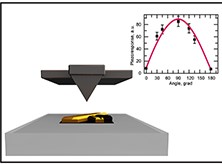Authors: Safaryan S., , Kipyl S., Romanyuk K., Bdikin I., Vasilev S., Zelenovskiy P., Shur V. Ya., Uslamin E. A.,, Vinogradov A.V., Kholkin E. L.

Abstract
Peptide-based nanostructures are very promising for nanotechnological applications because of their excellent self-assembly properties, biological and chemical flexibility, and unique multifunctional performance. However, one of the limiting factors for the integration of peptide assemblies into functional devices is poor control of their alignment and other geometrical parameters required for device fabrication. In this work, we report a novel method for the controlled deposition of one of the representative self-assembled peptides—diphenylalanine (FF)—using a commercial inkjet printer. The initial FF solution, which has been shown to readily self-assemble into different structures such as nano- and microtubes and microrods, was modified to be used as an efficient ink for the printing of aligned FF-based structures. Furthermore, during the development of the suitable ink, we were able to produce a novel type of FF conformation with high piezoelectric response and excellent stability. By using this method, ribbonlike microcrystals based on FF could be formed and precisely patterned on different surfaces. Possible mechanisms of structure formation and piezoelectric effect in printed microribbons are discussed along with the possible applications.
DOI: 10.1021/acsami.7b19668
Read Full Here: